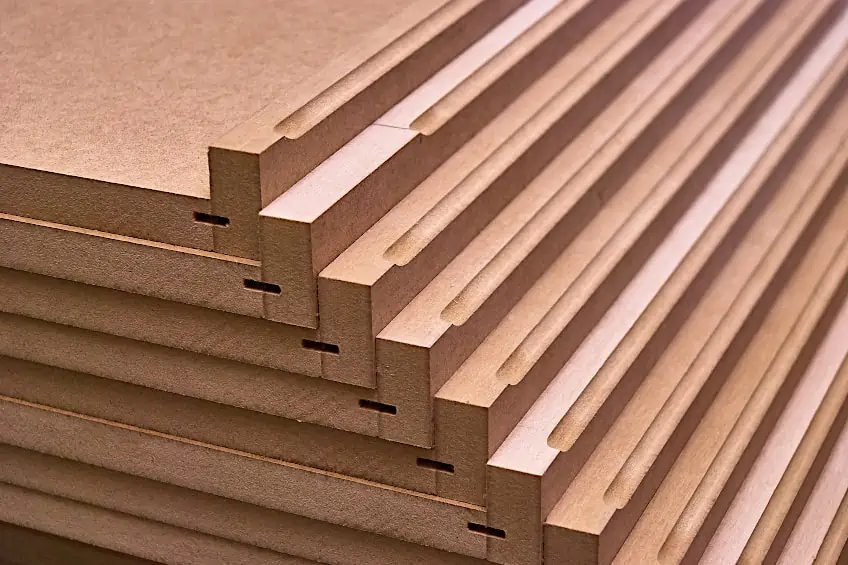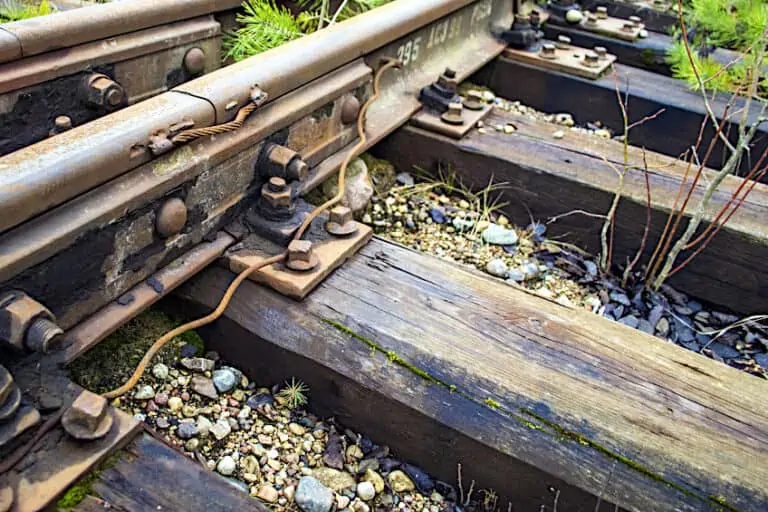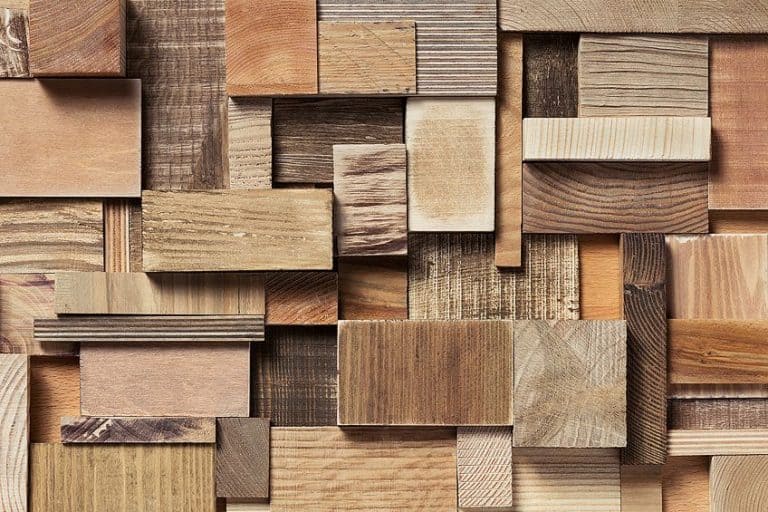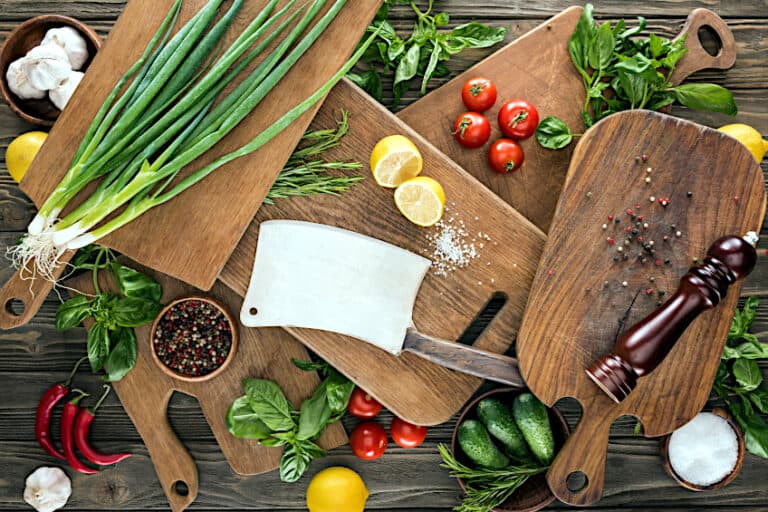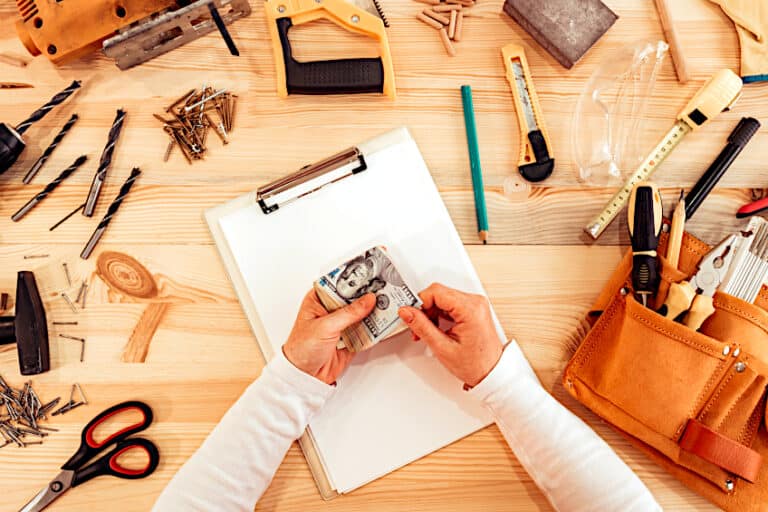What Is MDF Wood? – Guide to Medium-Density Fiberboard
With all the pressures of modern life, it can be easy to forget just how lucky we are to live in this modern age. No longer do we need to build fires to keep warm or use mud and sticks to construct our homes. We have loads of devices and materials that allow us not only to live comfortably but construct homes and offices in what can be considered record-breaking time. One material that makes feats like this possible is medium-density fiberboard (or MDF for short) which is one of many engineered wood materials that have taken the world by storm. What is MDF though? Does it have any weaknesses? What is it used for? Let’s dive into these and some of the more commonly asked questions about this awesome material.
What Is MDF?
What is MDF? In wood mills, loads of little wood chips are created during the cutting and drilling of large pieces of wood board. Instead of throwing these wood pieces away, they are mixed with epoxy resin and compressed together. Heat is added during the compression process, and when the mixture has had a chance to cool it retains its shape, leaving you with a “solid” block of medium-density fiberboard!
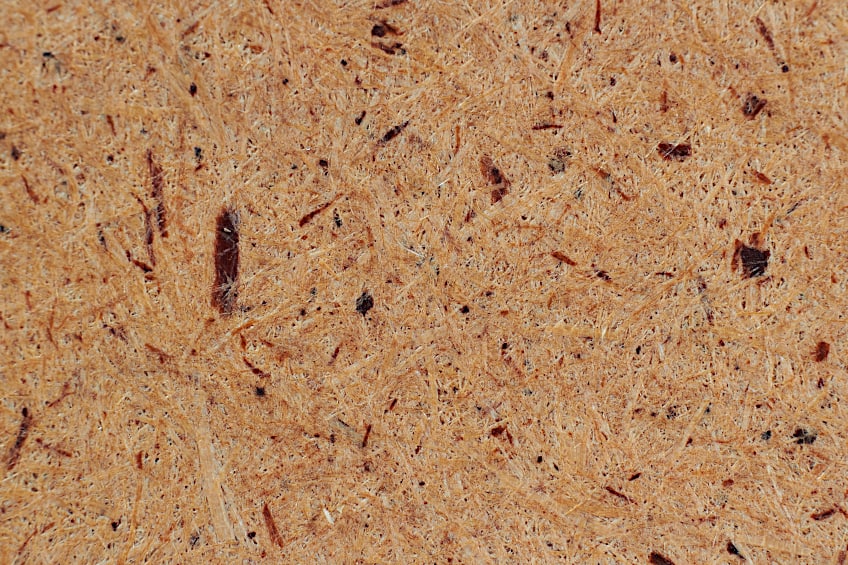
Once the block of MDF has been pressed, it needs to be sanded. The surfaces of MDF panels are sanded and smoothed down so that they’re usable for everyday applications. After this, some boards might receive other types of treatment like water or heat-resistant coatings, or something as simple as a veneer finish.
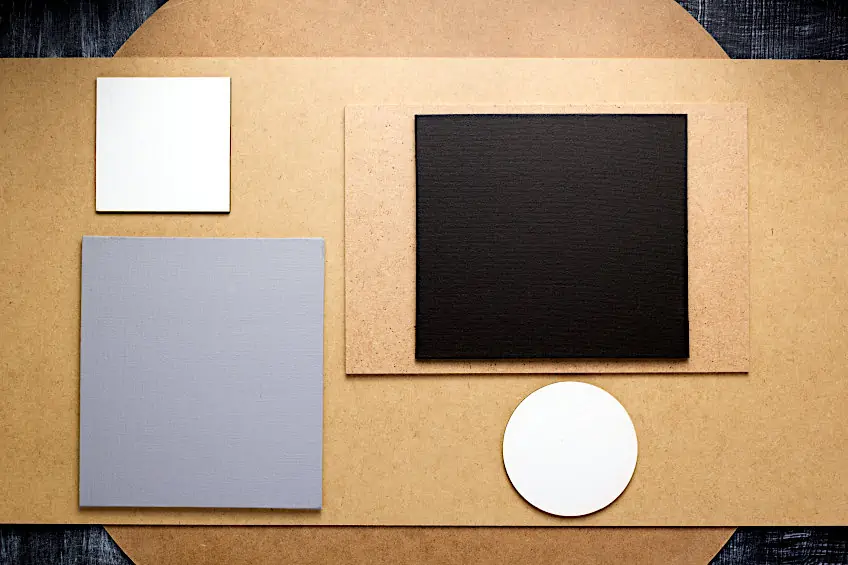
MDF Thicknesses
MDF board is sold in a wide range of sizes, and if you can’t find the size that fits your intended application they can be customized quite easily. MDF can be cut, sawn, drilled, and even tapped if you use the right type of screws. This makes MDF one of the most versatile light-duty construction materials on the face of the planet.
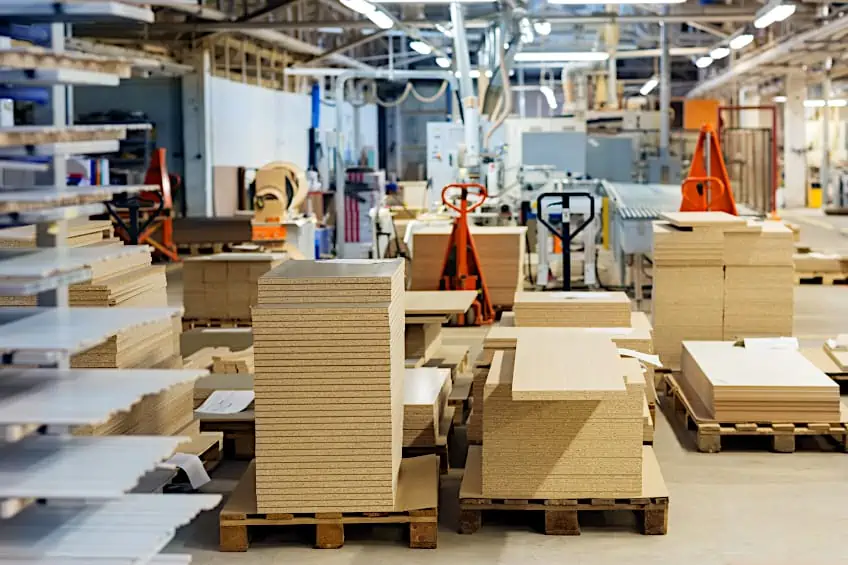
In addition to being sold in different sizes, MDF boards are also sold in different thicknesses. MDF thicknesses can range between ¼ inch, ½ inch, and ¾-ich thicknesses, although custom thicknesses can be commissioned through manufacturers. Most hardware and home improvement centers sell MDF boards in large sizes in case you’d like to resize or portion them out for various applications.
What Are the Pros and Cons of MDF?
Although MDF is versatile, it isn’t perfect. Like any material MDF has its advantages and disadvantages depending on what you would like to use it for and the type of MDF you choose to use. This being said, let’s have a look at some of the pros and cons of MDF board and where it would make the most sense to use this type of engineered wood.
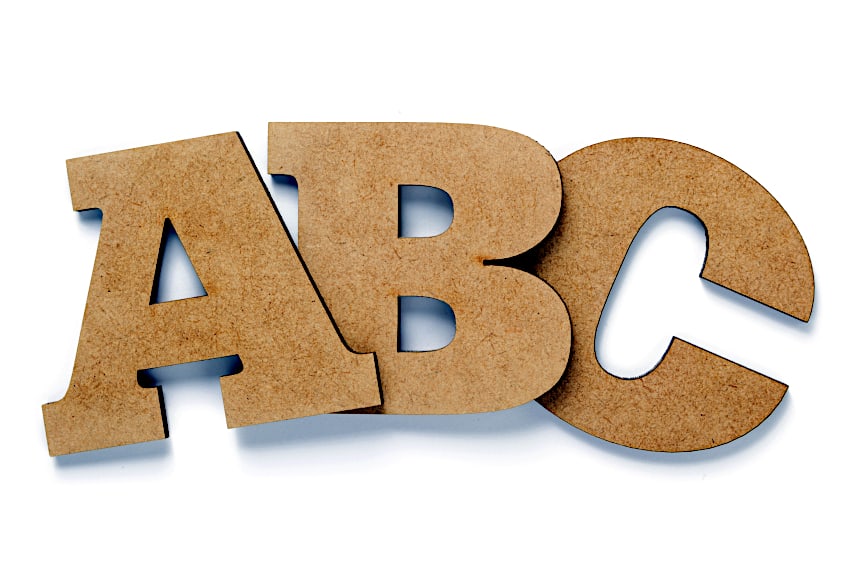
Advantages of MDF
Different types of MDF have different quirks and advantages. Plain old medium-density fiberboard has plenty of advantages to it as a construction material, which comes as no surprise considering how popular and widely used it’s become in a relatively short time period of time. One of the aspects of MDF that makes it so popular is the fact that you don’t need any specialized tools or knowledge to make use of it.
In fact, you might find that MDF is a lot easier to work with compared to conventional lumber as it contains no knots or voids that you’d have to otherwise workaround. This makes this use of MDF accessible to crafters of all skill levels, and since it’s also a lot cheaper than most solid wood species, those that are new to the crafting game.
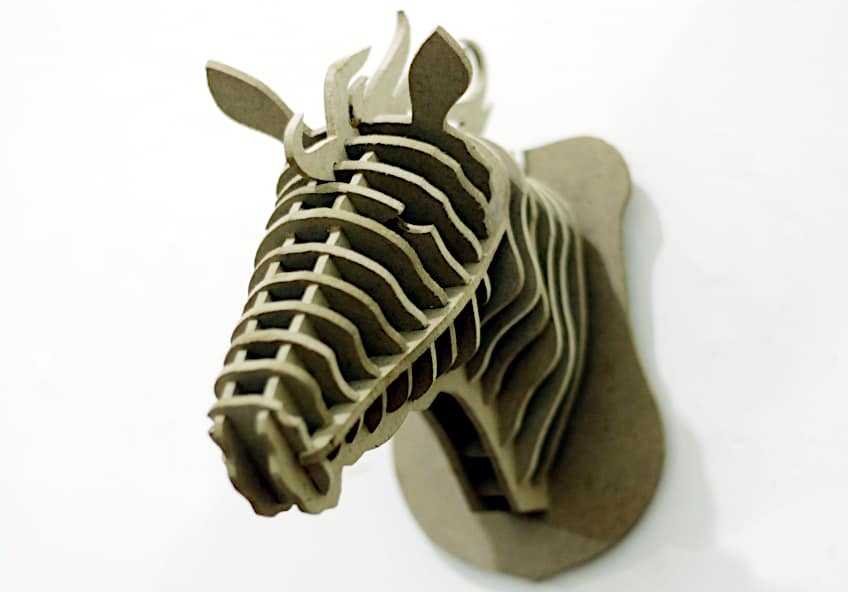
Unlike solid wood species, MDF will not warp when exposed to extremely high or extremely low temperatures, which is ideal if your workpiece will be situated outdoors most of the time. It also takes well to sawing, tapping, drilling, and cutting, and can even be bent to an extent (as long as you don’t mind cracking the surface a bit).
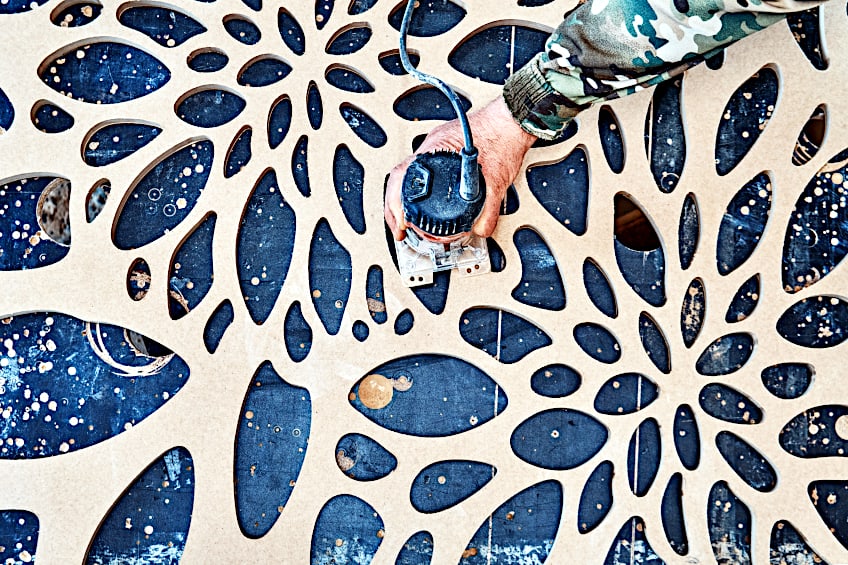
Most types of medium-density fiberboard are actually pretty sustainable products despite the fact that the epoxy resin used to bind the wood fibers produces VOCs (volatile organic compounds) which aren’t great for the environment overall. However, since MDF is made of wood chippings that would otherwise be thrown away or burned, it isn’t all that bad.
MDF is also extremely versatile. Since it can be made to any density, size, shape, and/or color, it can be used for pretty much any application that solid wood can (and even some it can’t). MDF can be used to create furniture, structural backing, internals or speakers, walls, shelving, and even soundproofing! As technology and production methods develop, so do the potential applications for MDF.
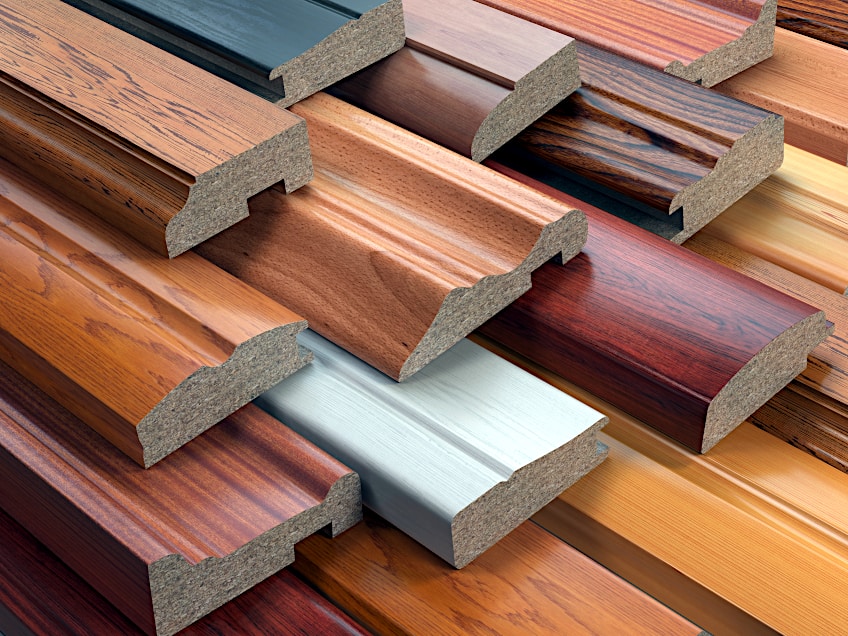
Disadvantages of MDF
While this might seem like a miracle material it most definitely is not without its detractors. What could possibly make this versatile and hard-wearing material less appealing you ask? Well, MDF can be deceivingly heavy thanks to how dense it is. This in combination with the fact that the edges and corners can be easily damaged means that MDF needs to be handled with care at all times.
Aside from being a bit brittle towards its edges, MDF has some other disadvantages you should consider before committing to it. For example, this material does rather poorly when exposed to excessive moisture, or worse, submerged in water. If a board has not been designed for moisture-rich environments it will swell up, crack, and eventually disintegrate.

Working with MDF isn’t always easy either. Due to MDF being made of little wood particles that have been joined together using glue, cutting, and/or sawing it creates a ton of dust. This dust gets on and inside everything due to how fine it is, so it’s best to cover up your workspace and yourself tightly if you’re going to be working with this material regularly.
Besides the wood dust, MDF isn’t a material that you should handle without the appropriate personal protective gear. Why? Well, some of the chemicals used to bind and preserve the wood particles are suspected carcinogens. Therefore, it is highly recommended that your workspace is well-ventilated and that you wear both a face mask and gloves when working with MDF.
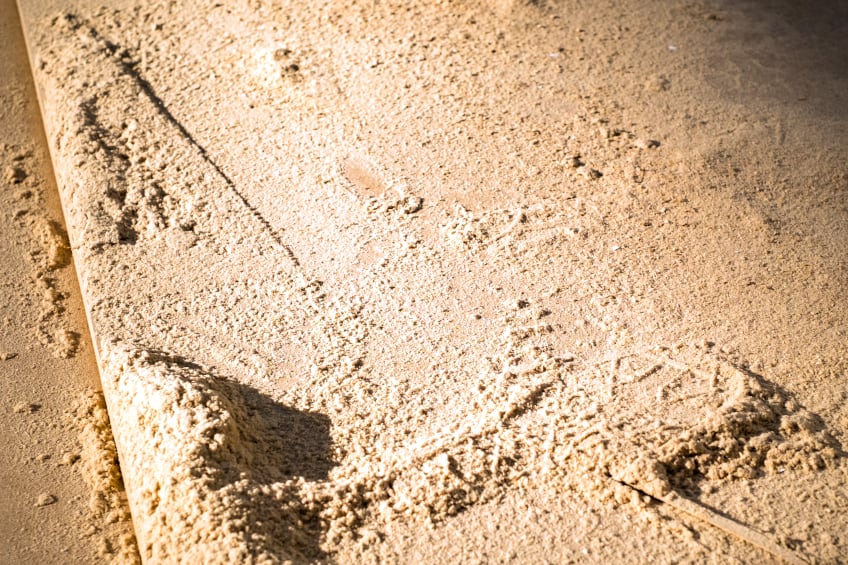
MDF also doesn’t take well to repeated use of fasteners. While using self-tapping screws once or twice should be fine, continually inserting and removing said screws will result in the internal thread wearing out quickly. Additionally, failing to prime MDF correctly can result in a lot of paint absorption and quite an unsightly workpiece.
- Dense and strong
- Does not contain knots
- Does not warp with temperature changes
- Easy to cut, saw, tap, drill, and shape
- Inexpensive
- Environmentally friendly
- Accepts paint well
- Extremely versatile
- Can be rather heavy
- Highly susceptible to water damage
- Does not retain fasteners (e.g., nails, screws, etc.) well
- Can be damaged by impact and abrasion easily
- Production process involves harmful chemicals
- Unappealing look when unfinished
- Can dull paint if not primed correctly
- Not suitable for heavy load-bearing applications
What Is MDF Board Used For?
What is MDF board used for? As we mentioned previously, MDF is one of the most versatile construction materials on the face of the planet. MDF is used in a wide variety of applications in many industries all over the world thanks to its density, rigidity, and ease of use. Below are a few examples of where you can find MDF in your everyday life, just keep in mind that some applications make use of a special type of MDF.
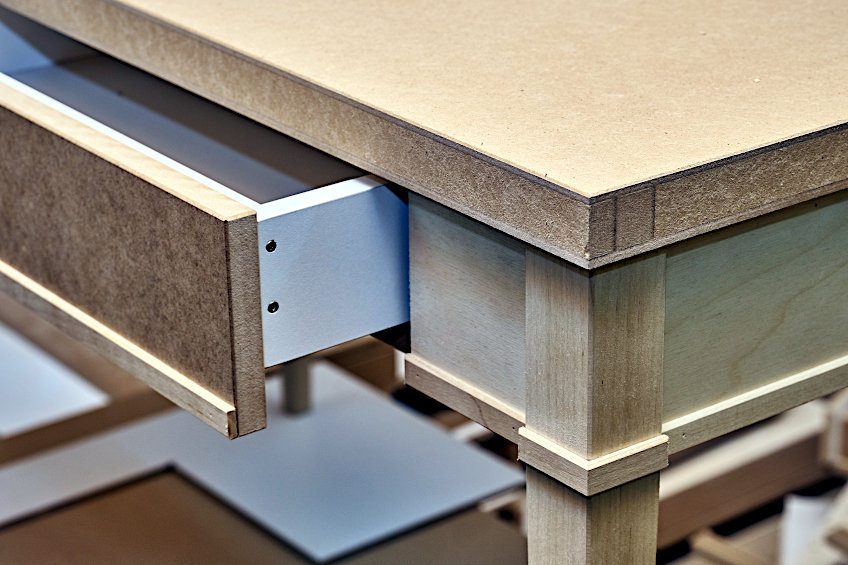
Furniture
Even though MDF is dense and heavy, it is still very pliable. This means that it can be fashioned into a number of shapes and sizes, which makes it the perfect material to make furniture out of! Generally speaking, MDF is used to make inexpensive furniture in mass production settings, but there are examples of MDF being used in higher-end furnishings too due to how easy it is to shape and secure.
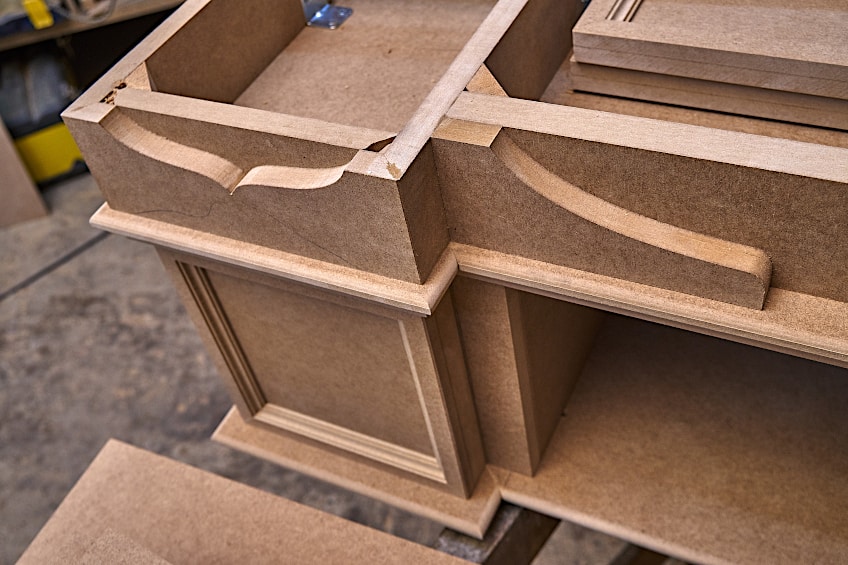
Cabinetry
If you’ve opened a cabinet door in the last two decades, then the chances are that it was made of MDF. MDF variants are used to create various cabinetry components because it is lightweight in small quantities, and since they can be insulated and waterproof these cabinets, shelves, and racks tend to last for a relatively long time.
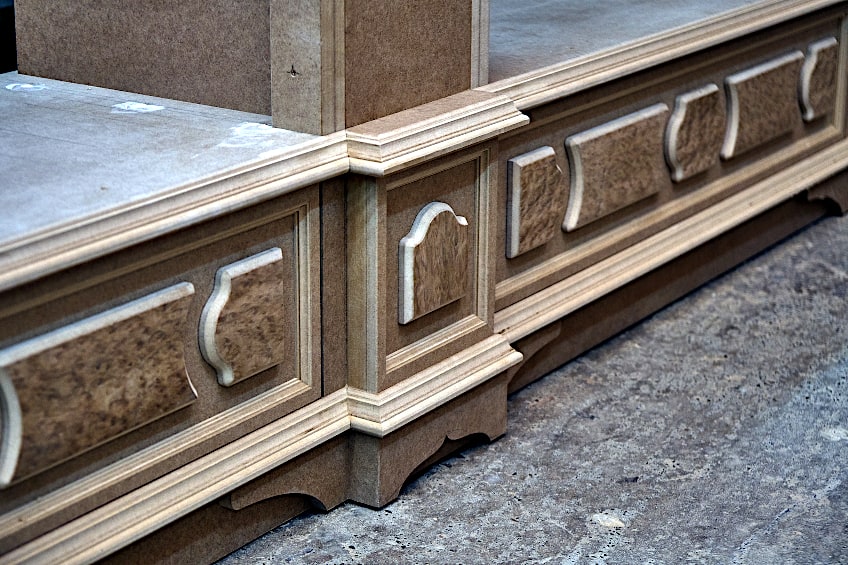
Fire Resistance
Since medium-density fiberboard has large amounts of resin in its makeup it is inherently resistant to the effects of open flames. Since MDF is used in the construction of dividing walls and similar structures they act as a means of preventing a fire from spreading from one unit to another. There are special kinds of MDF that have been specifically fitted with fire retardant materials for applications where the risk of fires breaking out is high.
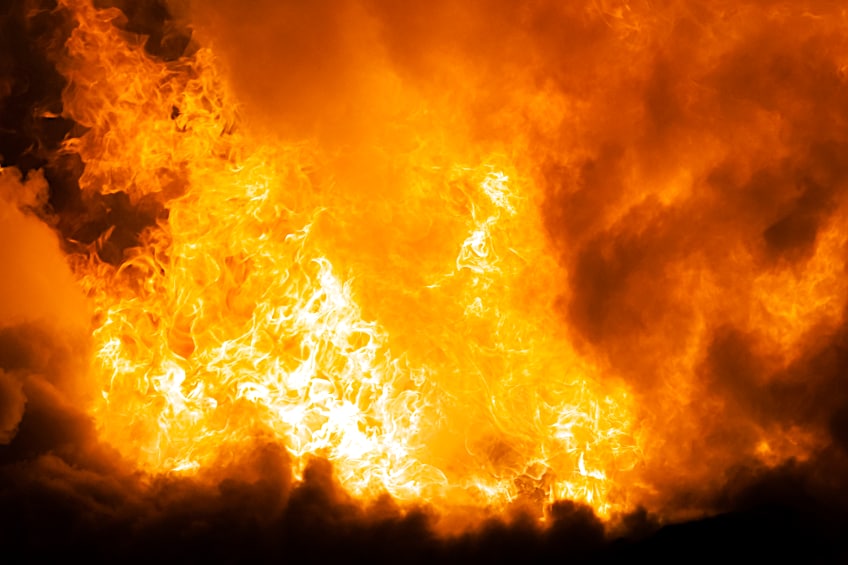
Moisture Repulsion
While MDF itself is very susceptible to the effects of water, water vapor, and condensation, there are special coatings that can be applied to the exterior of MDF to ensure that moisture is repelled and/or displaced on contact. The same coating that is used for this application can be used to insulate spaces that have been created using MDF.
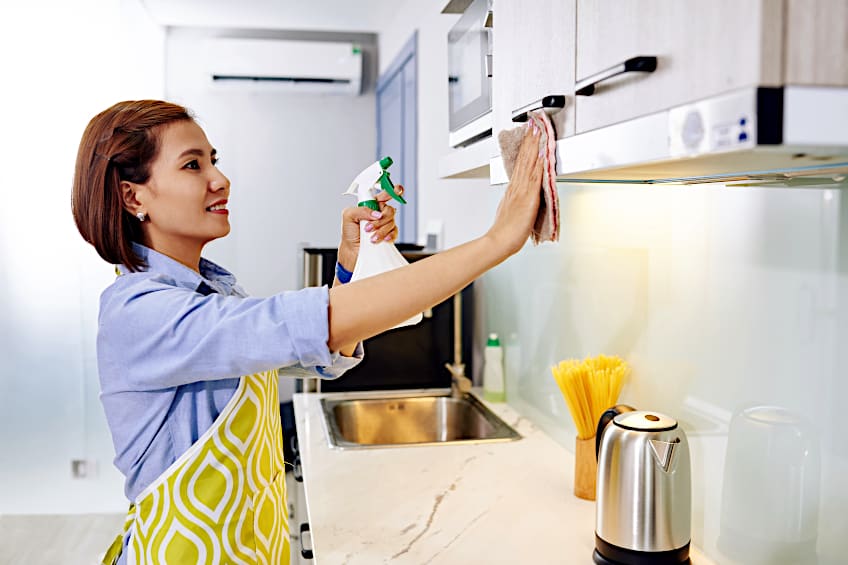
Soundproofing
If you’re looking for a cheap and effective way of soundproofing a space, then you should consider getting your hands on some MDF. Even low-quality MDF board is capable of insulating spaces from exterior noise or preventing excessive amounts of noise from escaping said space. It’s for this reason that MDF is commonly used in the construction of speaker boxes like subwoofers.
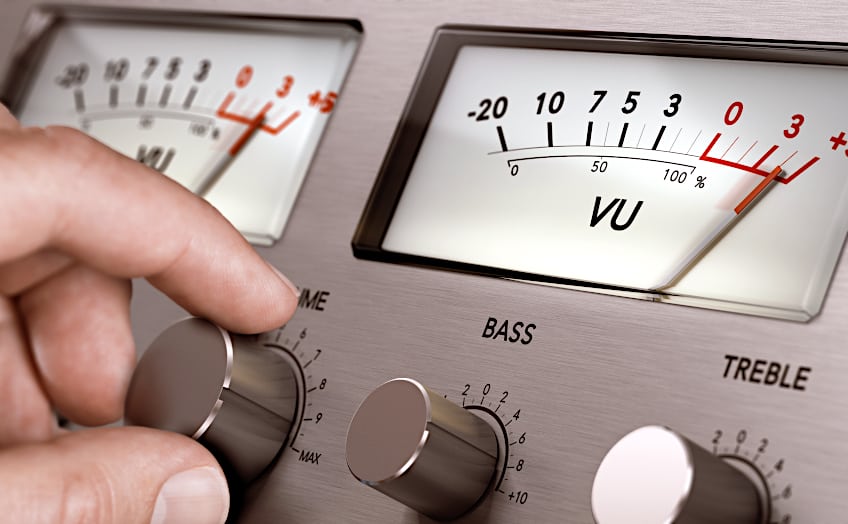
Roofing and Attic Insulation
While we definitely wouldn’t recommend using MDF to create exterior roofing panels, it’s more than suitable for interior roofing and can even function as backing for other roofing materials. If you have a sloped or irregularly shaped roof you can shape MDF to suit your application, and thanks to its rigidity and robust nature, it’s likely to last you decades if properly taken care of.
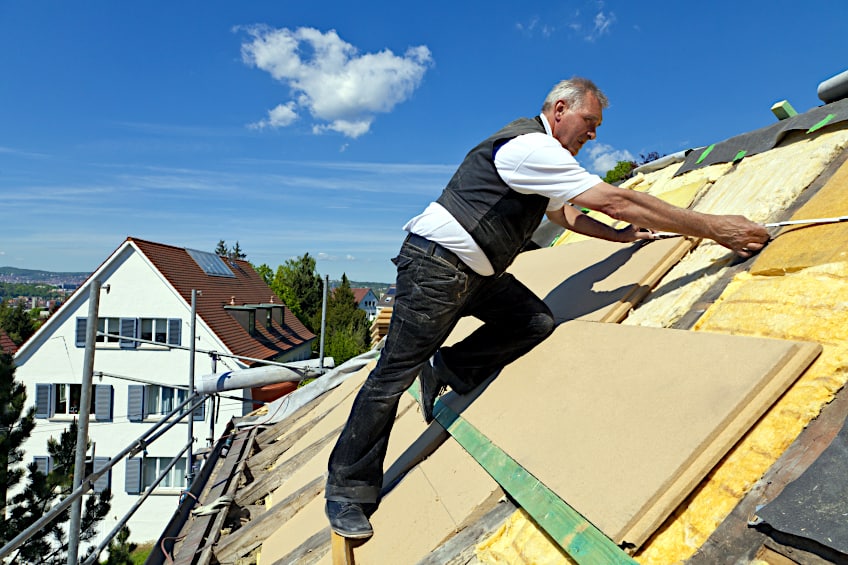
How MDF Is Made
MDF is one of the most popular wood substitutes on the market today. As we mentioned previously, it is made of wood pieces instead of solid wood or wood sliced like plywood. The process of making MDF is pretty straightforward, and only needs to be altered at certain stages to give the board different characteristics as desired. How is MDF made exactly? Well, the first wood board is broken down into fibers and chips by means of a defibrator. Once the wood has been broken down these wood particles are mixed with a combination of wax resins which function as binders. This solution is then heat-pressed in various molds to create MDF boards of many shapes, sizes, and densities.
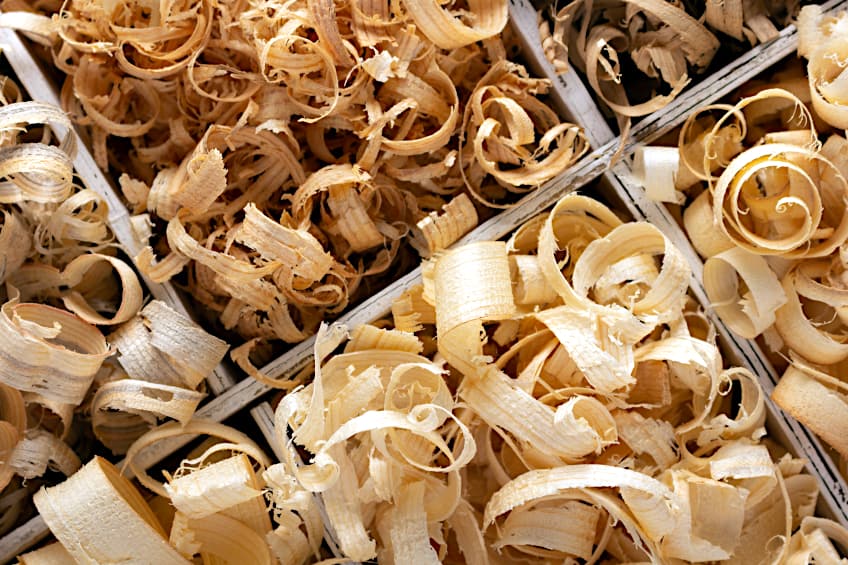
Once these boards have been pressed, they are allowed to be set for a certain period of time. When they’re ready, these boards can be shaped and sized according to the customer or manufacturer’s needs, and if the board requires a coating of water- or fire-resistant material, this can also be done at this stage in the production process.
MDF can be manufactured with additional materials for application-specific roles. Whether it be flame retardant, insulation, more flexible binding agents, or a certain type of wood, the possibilities are virtually limitless. It is this level of versatility and simplicity that makes MDF so popular, and if you couple this with the fact that MDF can be covered with veneer, you have a winning recipe.
Is MDF Cheap or Expensive?
This is a good question. Trying to complete a project on a budget can be frustrating, especially if your only options are cheap materials that you know won’t stand the test of time. Thankfully, MDF is something of a bargain bin material, offering great quality, rigidity, ease of use, and versatility at a relatively low cost. This doesn’t apply to all types of MDF though.
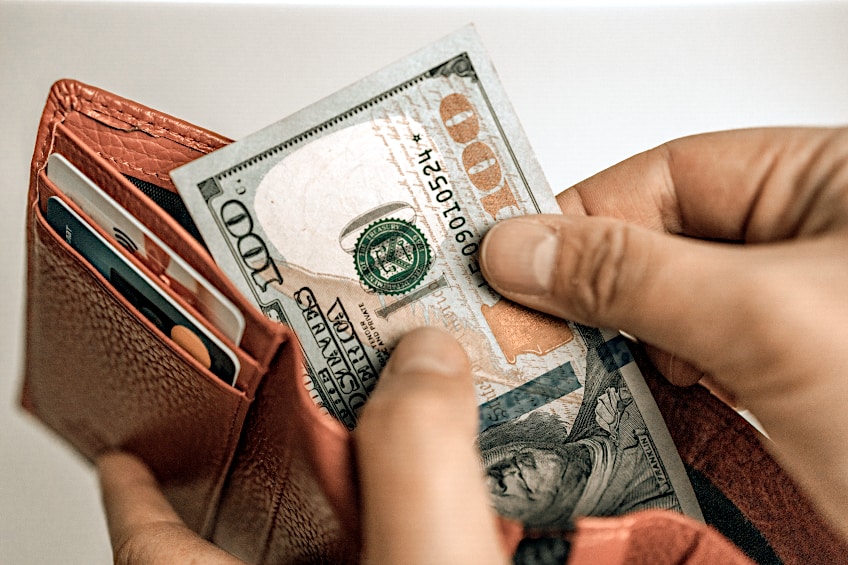
If you’re looking at MDF that has been manufactured for a specific application like water or fire resistance, you’ll likely find yourself paying a bit more compared to the run-of-the-mill variety. This being said, special-use MDF is often more robust and lasts longer than the conventional kind, so you definitely get what you pay for at the end of the day.
There are a few ways of getting around paying for those special types of MDF though. If you purchase a decent quality MDF board, you should be able to apply water and/or fire-resistant coatings to the surface of the boards yourself. Sure, this requires a bit of time and elbow grease, but you’ll likely save quite a bit of money in the process.
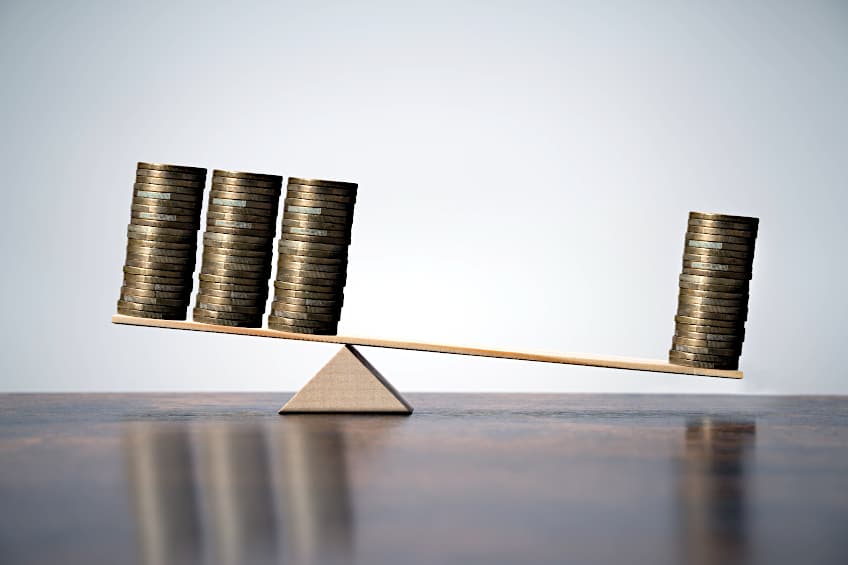
However, depending on where you live, building codes may require you to use a certain type of MDF for certain applications, in which the aforementioned workaround likely won’t impress your building inspector. This is why it’s important to know which materials are acceptable before diving into any renovation project.
Particle Board vs. MDF: Which One Is Better?
A common misconception is that particle board and MDF are the same things. They are (and we cannot stress this enough) completely different materials. However, they are used for similar applications so it’s easy to see how anyone could confuse the two. It doesn’t help that these materials can be used interchangeably in most everyday applications.

What exactly is particle board? Well, while MDF is made of wood chips particle board is made of repurposed sawdust that has been mixed with adhesives and heat-pressed into the shape of a board. Particle board is often cheaper than MDF, but its low price comes with some pretty important trade-offs that you should be aware of.
Particle board is nowhere near as strong as MDF, so if you’re thinking about using it as a construction material you could find yourself running into some problems down the line. It also has a very poor resistance to the effects of moisture and heat, even more so than MDF thanks to the process used to create it.
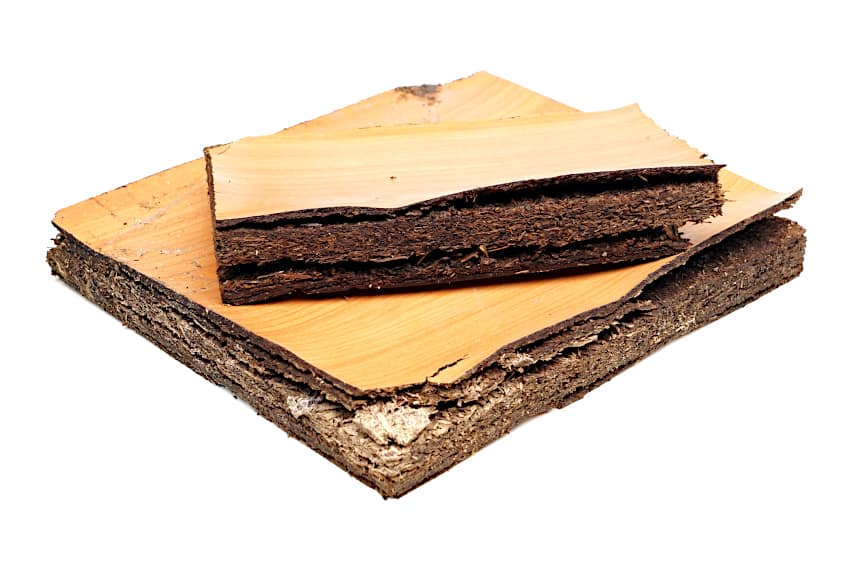
It is also less environmentally friendly compared to MDF as it produces formaldehyde while degassing, which isn’t good for you or the environment. However, it is used for most of the same applications as MDF and is just as easy to work with, but much cheaper, which makes it a popular material regardless of how weak it tends to be.
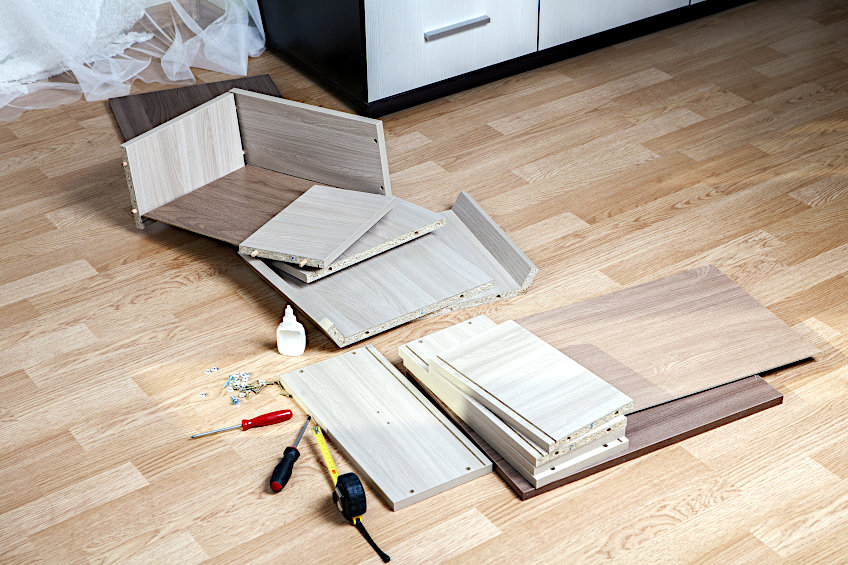
Which material is better then? Well, it depends on what you want out of the material and what your workpiece will be used for. If your application is purely aesthetic, then particle board is a cheap, easy, and versatile solution. However, if your workpiece will be used practically and/or will be exposed to the elements regularly, you’re better off using MDF.
What to Know When Working With MDF
While MDF is easy to work with there are some tips and tricks you should know before you get your hands dirty. After all, the last thing you want is to damage your freshly purchased MDF boards just as you’re about to install them, so here are some things you should keep in mind to ensure you get the most out of building materials.
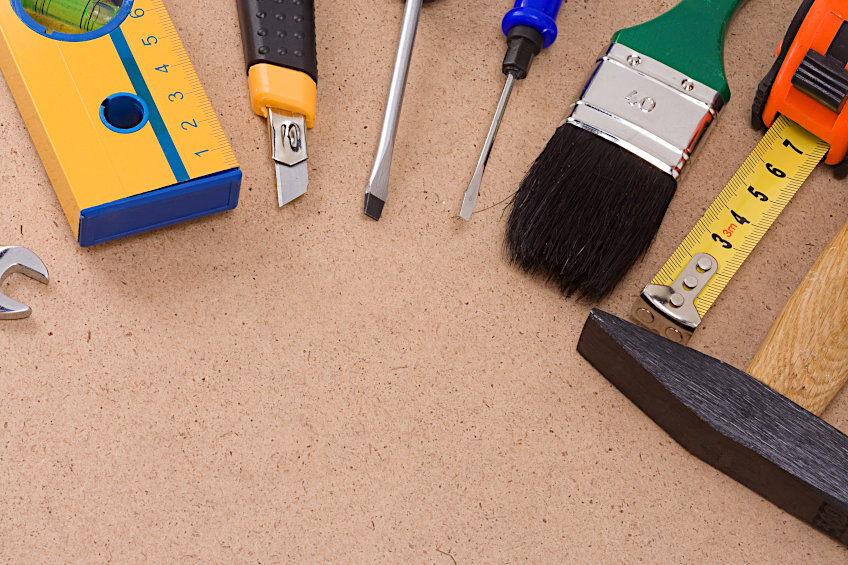
Integrate MDF
Now, you might think that MDF can only be used on its own or with other engineered woods, but this is not the case. You can use MDF with solid wood and other materials, just ensure that you use nails instead of screws to ensure they don’t come apart. MDF allows you to make large baseboards and other non-trip woodwork pieces cheaply.
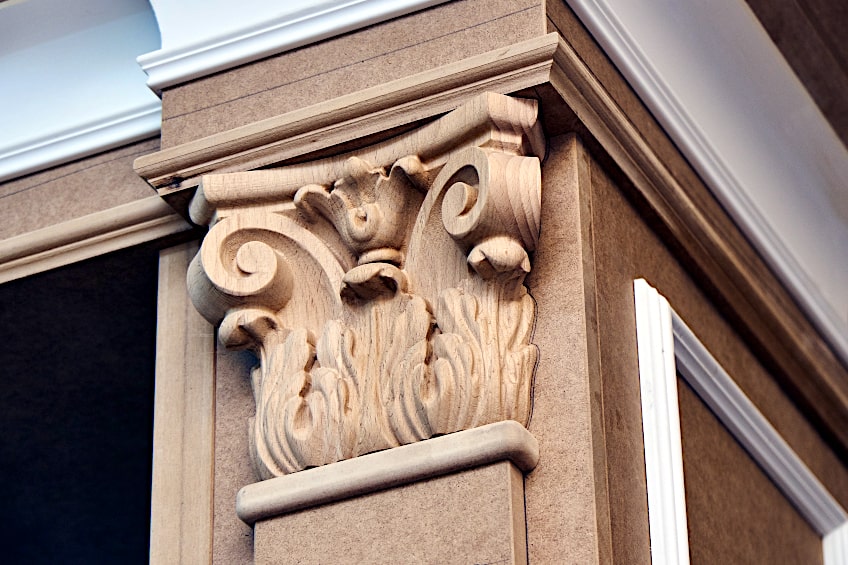
Wear the Appropriate Gear
We mentioned this previously, but it’s super easy to forget that you aren’t working with regular wood. When cutting, sanding, sawing, or cleaning MDF it tends to produce a lot of dust, so be sure to wear the appropriate personal protective gear such as a mask, gloves, and eye goggles when working with this type of material.
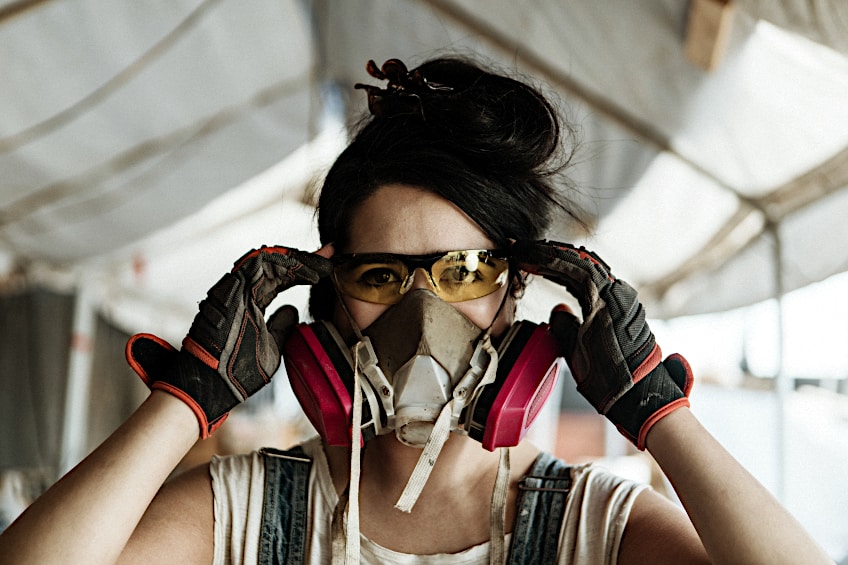
Always Countersink Before Driving Fasteners
The problem with MDF (and most other engineered woods) is that it has a soft center sandwiched between two hard surfaces. This causes the surface to split when using self-tapping screws, and it can cause wood chips to rise to the surface. The best way around this is to tap a hold with a countersink bit and then insert your screw afterward.
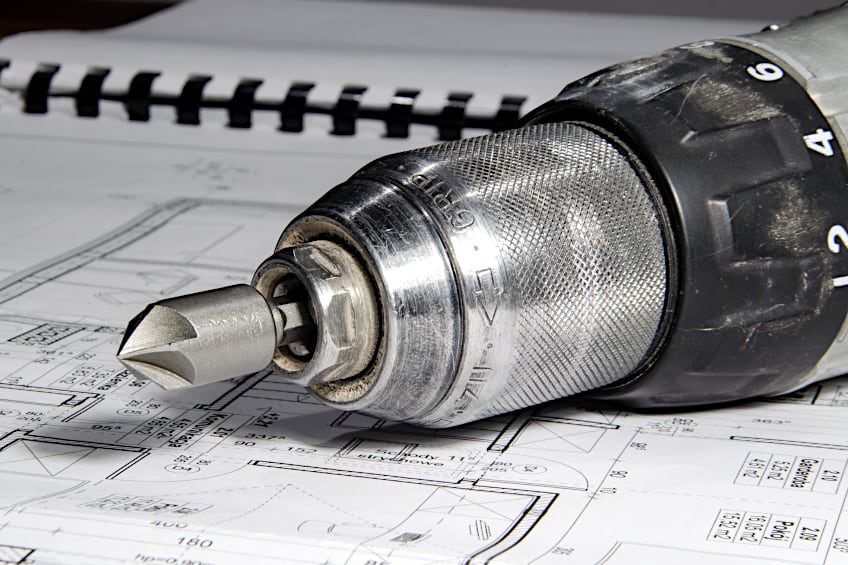
Don’t Attempt to Carry Full Sheets
Physics dictates that when an object is super dense, it tends to be super heavy. MDF tends to be super dense, so even if it looks lightweight, we can guarantee you it isn’t. It’s for this reason that you should avoid carrying a full-sized board of MDF, instead, we recommend having them portioned out into smaller, easier-to-manage panels.
Always Sand and Prime Before Painting
To avoid disappointment, we recommend always sanding and priming the surface of your MDF board before painting it. MDF will soak up a lot of paint if you apply paint without a primer, so give the surface a light sanding and apply your primer before painting. For the best results, we recommend using a solvent-based primer.
Avoid Dropping Your MDF Board
This should go without saying, but mistakes happen. The surface of MDF is usually pretty strong and rigid, but the edges are seldom coated with the same material, which means that dropping them can cause the edges to mushroom. This leaves you with the choice of either cutting the mushroomed edges off your board or getting an entirely new one.
Avoid Letting Your MDF Get Wet
As we mentioned previously, water and MDF aren’t friends. If your MDF gets wet it will raise and swell, making the board pretty much useless from that point on. However, if you’re willing to invest in a waterproof protective layer like resin or water-resistant paint, this could save your MDF board in the event of an accident.
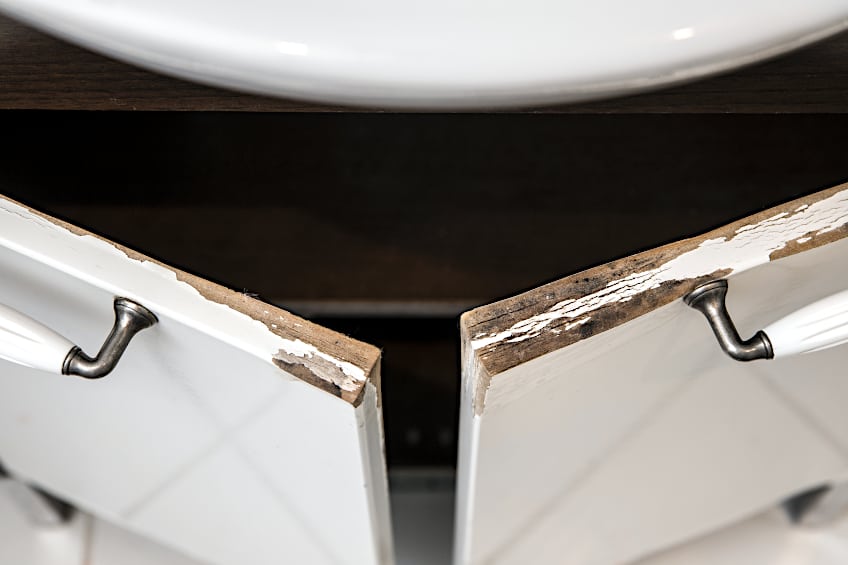
Reinforce Suspended Surfaces
If you’re going to be using MDF for load-bearing applications like shelving, then you should reinforce the bottom. Why? MDF will begin to sag over time if it is constantly bearing a weight, especially if it’s only supported on two ends. This being said, installing a brace in the center of the board can save it in the long run.
Now that you know what MDF is, what it’s used for, how to work with it, and some of the pros and cons associated with it, it’s time for you to get out there and put your newfound knowledge to the test. Remember to always wear the appropriate personal protective gear and to work in a well-ventilated area when working with MDF.
Frequently Asked Questions
What Is MDF Board?
What is MDF board? MDF is an engineered wood made by combining wood particles with resin and heat pressing them into the shape of a board. It is rigid, heavy, easy to use, inexpensive, and can be used for a wide variety of applications.
How Thick is a Board of MDF?
MDF is available in various thicknesses, but it is most commonly sold in ¼ inch, ½ inch to ¾ inch thicknesses. Custom thicknesses can be requested for specialized applications, but this will likely cost more than readily available thicknesses.
How Strong Is MDF?
How strong is MDF? MDF is typically capable of holding up to 300 lbs. per square foot. However, this is given that it has been attached to a solid surface with high-strength fasteners beforehand. MDF is not as strong as plywood but is a decent substitute for some applications.

I have been into woodworking since 2005 and woodturning since 2011. Because of my love for wood and woodworking, I started woodhappen.com to teach other enthusiasts about how to finish and seal wood, the best woodworking tools, the different types of wood, and everything else related to woodworking! Read more about me here.

